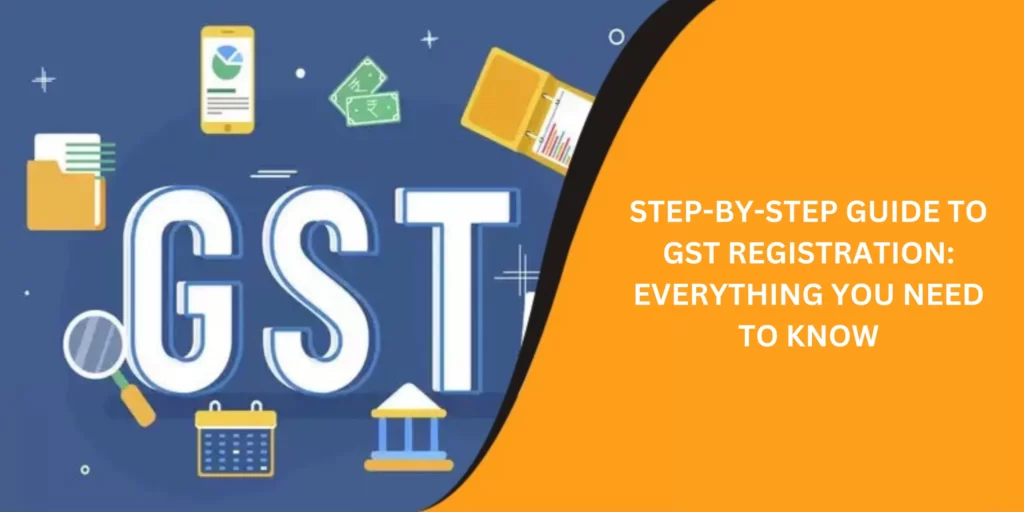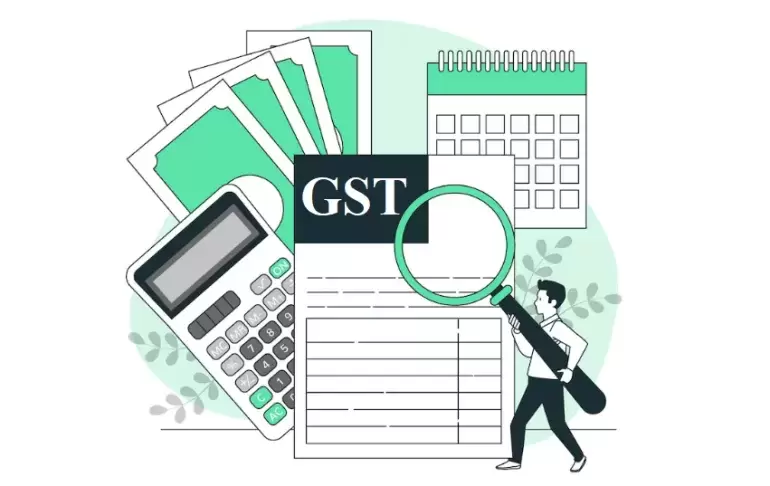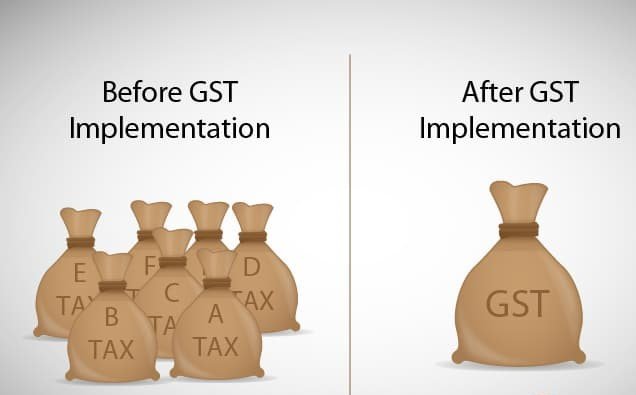Goods and Services Tax (GST) stands as one of the most significant tax reforms in India, transforming the country’s indirect taxation system and creating a unified tax structure. GST replaced a complex web of multiple taxes with a single tax regime, simplifying taxation for businesses and consumers alike.
This blog aims to explain what is GST, providing a step-by-step exploration of its structure, registration process, compliance requirements, and its impact on businesses and individuals.
Goods and Services Tax registration holds immense significance for businesses for several reasons like Legal Requirements, Legitimate Business Identity, Input Tax Credit (ITC) claims, Compliance with Law, Access to Government Tenders, E-commerce and Online Marketplaces, Compliance with E-invoicing and E-way Bill Requirements.

Eligibility and Process of GST Registration
Eligibility for Goods and Services Tax registration depends on the annual aggregate turnover exceeding the prescribed threshold limit or engaging in inter-state supply, among other criteria. The process involves online registration on the Goods and Services Tax portal, providing business details, uploading required documents, verification by the tax officer, and obtaining the Goods and Services Tax Identification Number (GSTIN).
Who needs to register for GST?
- Threshold Turnover: Any business with an annual aggregate turnover exceeding the prescribed threshold limit is required to register under GST. The threshold limit varies based on the type of business and the state of operation. For most states, the threshold is Rs. 40 lakhs (Rs. 20 lakhs for specific special category states).
- Inter-State Supply: If a business engages in inter-state supply of goods or services, Goods and Services Tax is mandatory, regardless of turnover.
- E-commerce Operators and Sellers: E-commerce operators and sellers must register under Goods and Services Tax, regardless of turnover. This ensures proper tax compliance in the fast-growing e-commerce sector.
- Casual Taxable Persons: Businesses involved in occasional taxable transactions (e.g., trade fairs, exhibitions) are required to register as casual taxable persons.
- Non-Resident Taxable Persons: Non-resident businesses supplying taxable goods or services in India need to register forGoods and Services Tax.
- Input Service Distributors (ISD): ISDs, who distribute input tax credit (ITC) among their branches or units, must register under Goods and Services Tax.
- Agents and Tax Deductors: Agents responsible for collecting tax on behalf of their clients and tax deductors are required to register under Goods and Services Tax.
- Specific Businesses: Certain businesses, irrespective of turnover, like restaurants, catering, and specified financial institutions, need to register for Goods and Services Tax.
Step-by-step process of GST registration
- Online Portal: Visit the Goods and Services Tax portal (www.gst.gov.in) and click on the “Services” tab. Select “Registration” and then “New Registration.”
- Choose Type of Registration: Select the appropriate “Taxpayer” category based on the nature of your business (e.g., regular taxpayer, composition taxpayer, etc.).
- Fill in Part-A of the Application: Enter details like legal name, PAN, mobile number, and email address. You will receive an OTP for verification.
- Part-B of the Application: Enter the OTP received on your mobile and email to proceed. Complete the application form by providing additional details like business name, address, bank account details, and business activities.
- Verification of Documents: Upload the required documents, such as PAN card, identity proof, address proof, bank account details, and business registration documents.
- ARN Generation: After successful submission, an Application Reference Number (ARN) will be generated, and the application will be forwarded to the tax officer for verification.
- Goods and Services Tax Officer Verification: The tax officer will verify the application and may ask for additional information or documents, if required.
- GSTIN Allotment: Upon successful verification, a Goods and Services Tax Identification Number (GSTIN) will be allotted to the business.
- Download GST Certificate: The Goods and Services Tax certificate can be downloaded from the Goods and Services Tax portal.
Common documents required for registration
- PAN Card of the Business or Proprietor/Partners/Directors
- Identity and Address Proof of Proprietor/Partners/Directors
- Passport-sized photographs
- Proof of Business Address (e.g., rent agreement, electricity bill)
- Bank Account Details (cancelled cheque or bank statement)
- Business Registration Documents (e.g., Partnership Deed, Certificate of Incorporation)
- Letter of Authorization for Authorized Signatory (if applicable)
- Digital Signature (in case of company or LLP registration)
GST and E-Commerce: Understanding the Implications

Obligations of E-commerce Operators under GST
- TCS Collection: E-commerce operators are required to collect Tax Collection at Source (TCS) on the taxable value of goods or services supplied through their platform. The collected TCS must be deposited with the government.
- TCS Returns: E-commerce operators need to file monthly TCS returns (GSTR-8) by the 10th of the following month, providing details of TCS collected and the transactions involved.
- E-commerce Aggregator TCS: If an e-commerce operator acts as an aggregator, facilitating the supply of goods or services between multiple suppliers and customers, they must register separately as an e-commerce aggregator.
GST Registration Requirements for E-commerce Sellers
- Threshold Limit: E-commerce sellers must register under Goods and Services Tax if their annual aggregate turnover exceeds the prescribed threshold limit, irrespective of the state in which they operate.
- Multi-State Operations: E-commerce sellers conducting business across multiple states are required to register in each state where they have a physical presence or carry out transactions.
- Voluntary Registration: E-commerce sellers with turnover below the threshold limit have the option to voluntarily register under Goods and Services Tax to avail benefits like Input Tax Credit (ITC) and seamless inter-state transactions.
GST Compliance for Cross-border E-commerce Transactions
- Import of Services: E-commerce operators involved in the supply of services from foreign vendors to customers in India must comply with the Reverse Charge Mechanism (RCM) and pay Goods and Services Tax on imported services.
- Export of Goods and Services: E-commerce sellers engaged in export of goods or services are eligible for Goods and Services Tax exemption or zero-rated supplies, subject to fulfilling specific conditions and documentation requirements.
- IGST Payment: Cross-border e-commerce transactions involve Integrated Goods and Services Tax (IGST) payment for inter-state supplies, which must be accounted for separately in GST returns.
- E-commerce and Customs: Compliance with customs regulations is crucial for cross-border e-commerce transactions, ensuring adherence to import/export regulations, duties, and documentation.
GST vs. Previous Tax Regime: A Comparative Analysis

The introduction of Goods and Services Tax (GST) marked a significant departure from the previous tax regime in India. Under the previous system, multiple taxes like VAT, Service Tax, and Central Excise Duty created a complex web of regulations, leading to cascading taxes and compliance challenges. In contrast, GST streamlined the tax structure by unifying various taxes into a single comprehensive tax on the supply of goods and services. This simplification reduced compliance burden, eliminated cascading taxes through Input Tax Credit (ITC) mechanisms, and broadened the tax base for increased revenue collection.
While the transition to GST faced initial challenges, such as technology adoption and rate adjustments, the long-term benefits were evident. The unified tax structure improved ease of doing business, encouraged formalization of the economy, and facilitated seamless inter-state trade. GST’s standardized and transparent system has contributed to India’s economic growth and competitiveness, making it a transformative tax reform with lasting impacts.
If you want to learn more about GST training CLICK HERE…
Conclusion
In conclusion, understanding the complexity of Goods and Services Tax (GST) registration is essential for businesses and individuals seeking to navigate the complexities of the GST regime. By grasping the eligibility criteria and the step-by-step process for GST registration, businesses can ensure compliance with tax laws, access benefits like Input Tax Credit (ITC), and conduct seamless inter-state transactions.
GST registration not only establishes a legitimate business identity but also enables businesses to thrive in a unified tax environment, contributing to India’s economic growth and fostering a more formalized and transparent economy. As the GST landscape evolves, staying informed about any updates or changes in GST laws is crucial for businesses to remain compliant and take full advantage of the benefits offered by this transformative tax system.


